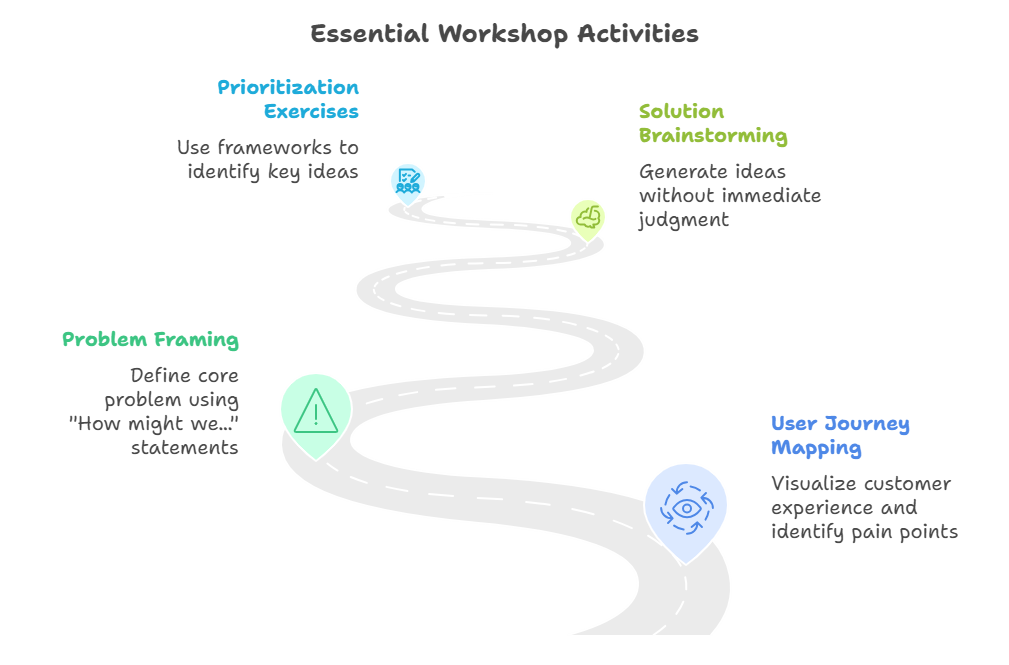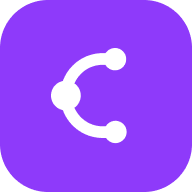How to Run a Product Discovery Workshop: A Step-by-Step Guide
Learn how to run effective product discovery workshops with practical frameworks, agenda templates, and facilitation tips for product managers and teams.
What Is a Product Discovery Workshop?
A product discovery workshop is an interactive session where stakeholders come together to gain a deep understanding of a project's objectives, target audience, and anticipated outcomes. During these sessions, participants discuss project objectives, organize plans, and establish measurements for success. These workshops break down project ideas into tangible requirements, defining users, their interactions, and frustrations to create products that truly work for customers.
Why Product Discovery Workshops Matter
Product discovery workshops help organizations set their projects up for success and ensure smooth execution from start to finish. By investing time and resources in discovery workshops, teams can align on vision, identify potential risks early, and create shared understanding across departments. These sessions transform abstract ideas into actionable plans while building stakeholder buy-in and team cohesion.
Preparing for Your Workshop
Define Clear Objectives
Before inviting participants, establish what you want to achieve. Are you exploring a new market opportunity? Solving a specific customer problem? Validating a product concept? Clear objectives will guide your agenda and help you select the right participants. Document your goals and share them with attendees beforehand to ensure everyone arrives prepared.
Select the Right Participants
Include representatives from key stakeholder groups: product management, design, engineering, marketing, and customer support. Consider inviting actual customers or user representatives when possible. The ideal workshop size is typically 5-10 participants to maintain engagement while ensuring diverse perspectives.
Create a Structured Agenda
An effective agenda is key to a productive discovery workshop. Structure your session to balance discussion, activities, and breaks. Typical workshops run 2-4 hours and include:
- Introductions and icebreakers
- Problem statement review
- User journey mapping
- Solution brainstorming
- Prioritization exercises
- Action planning
Running the Workshop Successfully
Kick Off Effectively
Start by introducing yourself and the purpose of the workshop. Set basic rules like open communication and active listening. According to product management communities, beginning with clear introductions helps establish psychological safety and encourages participation.
Keep the Workshop Focused
Maintain momentum by sticking to your agenda and timeboxes. When discussions drift off-topic, gently guide them back to the core objectives. Use timekeeping techniques like setting visible timers for each activity to ensure you cover all planned topics without rushing.
Encourage Participation from All Team Members
Create an inclusive environment where everyone feels comfortable sharing ideas. Use techniques like round-robin brainstorming, silent voting, and small group discussions to ensure quieter participants have equal voice. Remember that the best insights often come from unexpected sources.
Essential Workshop Activities

User Journey Mapping
Visualize the customer experience from initial awareness through ongoing usage. Identify pain points, emotional highs and lows, and opportunities for improvement. This activity helps teams develop empathy for users and align on customer-centric solutions.
Problem Framing and Solution Brainstorming
Clearly define the core problem before jumping to solutions. Use techniques like "How might we..." statements to frame challenges as opportunities. Then, facilitate brainstorming sessions where all ideas are welcomed without immediate judgment or criticism.
Prioritization Exercises
Use frameworks like MoSCoW analysis or impact-effort matrices to identify which ideas to pursue first. These tools help teams make data-informed decisions about where to focus development resources for maximum impact.
Documenting and Sharing Results
Documenting and sharing the results of the discovery workshop is essential for ongoing collaboration and project success. Capture key insights, decisions, and action items in a format that's accessible to all stakeholders. Consider creating a shared repository or using collaboration tools to maintain visibility as the project progresses.
Common Challenges and Solutions
Managing Dominant Personalities
When certain participants dominate discussions, use structured facilitation techniques like timed speaking rounds or anonymous idea submission. This ensures all voices are heard while maintaining workshop momentum.
Dealing with Uncertainty
Discovery workshops often surface more questions than answers. Embrace this uncertainty as part of the process. Focus on identifying the most critical unknowns and creating plans to address them through further research or experimentation.
Tools for Workshop Success
While traditional whiteboards and sticky notes work well for in-person sessions, digital tools can enhance remote workshops. ClipMind offers mind mapping capabilities that help visualize workshop outcomes and maintain alignment across distributed teams. For structured analysis, consider using ClipMind's free AI tools like the AI SWOT Analyzer or Pros and Cons Analyzer to systematically evaluate workshop findings.
Turning Insights into Action
The true value of a discovery workshop emerges in the follow-through. Assign clear owners to action items, establish timelines for next steps, and schedule regular check-ins to maintain momentum. By translating workshop insights into concrete plans, you ensure the time invested delivers tangible business value.
Well-facilitated product discovery workshops create alignment, uncover valuable insights, and set the foundation for successful product development. With proper preparation, inclusive facilitation, and systematic follow-up, these sessions become powerful tools for building products that customers truly need and love.
 ClipMind
ClipMind